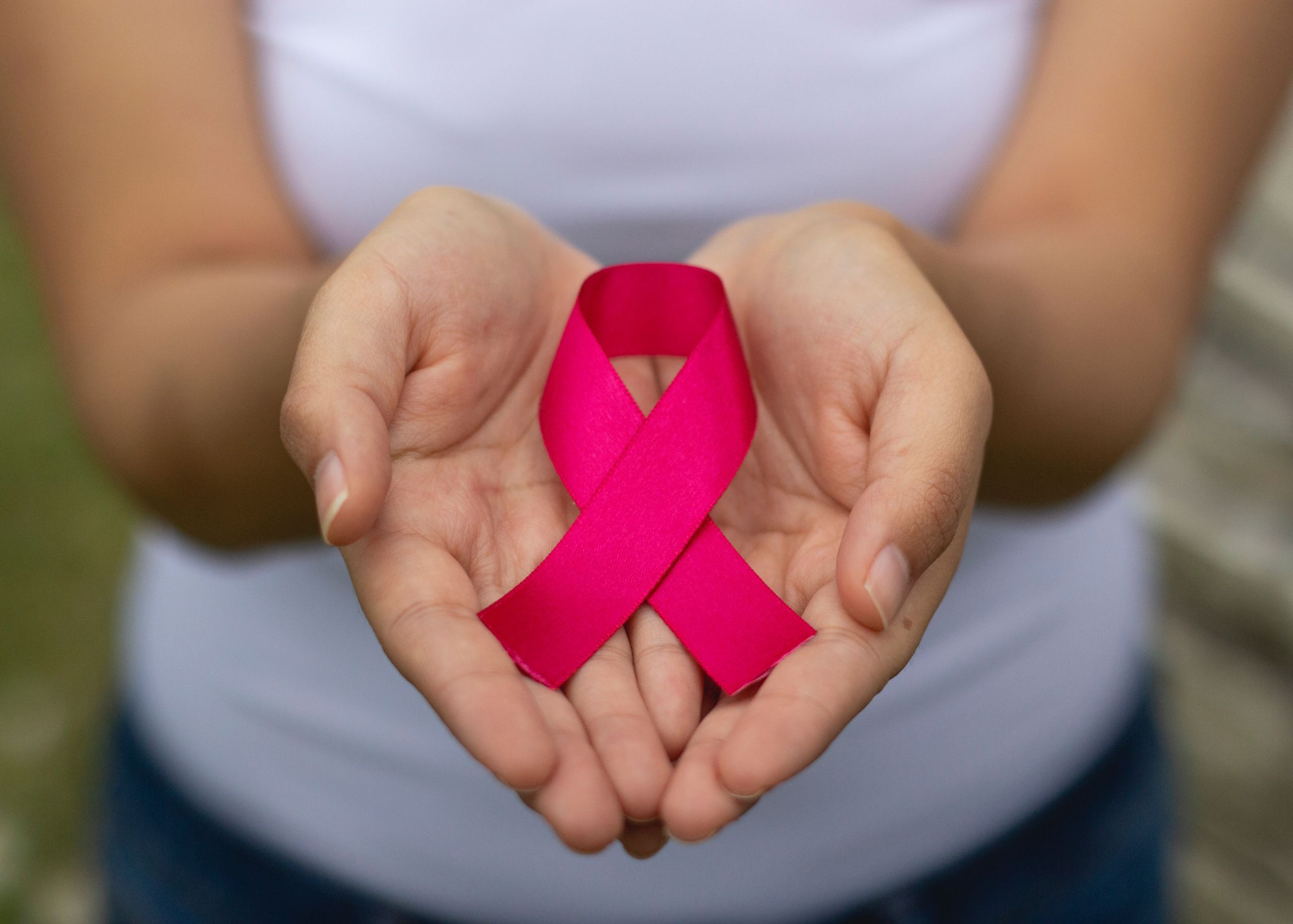What Does It Mean?
Triple-Negative Breast Cancer (TNBC) is a name that has historically been applied to tumors that lack expression of the estrogen receptor (ER), progesterone receptor (PR), and human epidermal growth factor 2 (HER2), which occur on the surface of the cancer cell and are dependent on hormones.
What Causes Triple-Negative Breast Cancer (TNBC)?
The general cause of breast cancer is unknown, which also applies to the triple-negative subtype.
Who is at Risk of TNBC
TNBC is more commonly diagnosed in women younger than 40 years than women over 50 years. Other risk factors include,
Positive BRCA Mutation Status – Up to 15% of patients with TNBC carry a breast cancer susceptibility gene (BRCA) mutation, mainly in BRCA1.
Less than 6% of breast cancers are connected with a BRCA mutation. Given this result, any patient with a triple-negative condition should be referred to a genetic counselor for a BRCA testing discussion. In addition, any patient younger than 60 years old with TNBC should have BRCA germline testing.
Premenopausal Status has been linked to a higher diagnostic rate of TNBC than postmenopausal status. The assessment of premenopausal women’s tumors for the presence of ER-positive and HER2-positive illnesses is essential.
Other factors – According to studies, obesity and young age at first pregnancy are associated with an increased risk of TNBC.
Similarly, breastfeeding and parity may be related to reduced risk.
How is TNBC Diagnosed?
The standard mammography and ultrasound cannot detect TNBC, and in some circumstances, MRI is required. Oncologists use the term “triple-negative” to describe tumors with 1% expression of ER and PR as measured by immunohistochemistry (IHC), and for HER2, 0 to 1+. The cancer type is identified by biopsy, the gold standard for cancer diagnosis.
TNBC is typically more aggressive than other breast cancer kinds.
TNBC has become the most receptive type of cancer as a result of numerous new advancements in medication, such as powerful immunotherapy designed specifically for this type.
It accounts for around 15% of breast cancers and is caused by genetic alterations in most instances.
Why is Triple-Negative Breast Cancer a Cause of Concern?
This type of breast cancer develops swiftly if not found and treated as soon as possible. Thus, it is cause for concern in most instances.
How is Triple Negative Breast Cancer Different from the Other Types of Breast Cancer?
- Infiltrating Ductal Carcinoma is the most prevalent kind of invasive breast cancer, accounting for 70% of invasive lesions. These lesions are characterized by cords and nests of cells with variable gland development and cytologic characteristics ranging from benign to extremely malignant.
- Infiltrating Lobular Carcinoma accounts for approximately 8% of all invasive breast cancers. They are characterized microscopically by tiny cells that enter the mammary stroma and adipose tissue singly and in a single-file arrangement.
- The Mixed Ductal/Lobular Carcinoma has ductal and lobular characteristics and is classified as mixed invasive carcinoma. These account for 7% of invasive breast cancers.
- Other Histologic Types – Metaplastic, mucinous, tubular, medullary, and papillary carcinomas are also metaplastic, mucinous, tubular, and medullary carcinomas. They collectively account for less than 5% of invasive malignancies.
Molecular Subtypes – The following molecular subtypes have been identified based on gene expression profiles.
- Luminal Subtypes are luminal A and luminal B. They constitute the majority of estrogen (ER)-positive breast cancers and are the most prevalent subtypes of breast cancer. The term “luminal” refers to the resemblance in gene expression between these tumors and the breast’s luminal epithelium. Typically, they produce cytokeratins 8 and 18.
- HER2-Enriched – The human epidermal growth factor receptor 2 (HER2)-enriched subtype accounts for 10 to 15% of breast tumors and is distinguished by the high expression of the HER2 and low proliferative expression of the luminal and basal gene clusters. These cancers frequently lack ER and progesterone receptors (PR). On molecular profiling, only half of the clinical HER2-positive breast tumors are HER2 enriched; the other half can contain any molecular subtype but consists primarily of HER2-positive luminal subtypes.
- Basal Subtypes – Most of these tumors are triple-negative breast cancers since they are negative for ER, PR, and HER2. Separately, subtypes of ER-negative breast tumors are discussed in further detail.
Which is the Most Serious Type of Breast Cancer?
TNBC is regarded as the most severe kind of breast cancer, although it is crucial to note that, due to recent improvements in therapy, TNBC is now easier to treat. TNBCs exhibit rapid growth and are more likely to be discovered clinically instead of through mammography than ER-positive tumors or tumors diagnosed between mammograms.
However, intrinsic variability in breast tissue density among women diagnosed with TNBC could account for these variations in presentation. The most prevalent form of TNBC is infiltrating ductal carcinoma, while medullary carcinoma, a rare subtype, is typically triple-negative. TNBCs may display geographic necrosis, an expanding invasion boundary, and a lymphocytic stromal reaction. Histopathologically, a unique subtype of TNBCs is identified as metaplastic. This is, nevertheless, a broad collection of cancer forms ranging from squamous to stromal.
Global Statistics of Breast Cancer
Australia, Europe, and North America have the greatest incidence of breast cancer. In the UAE 1030, new breast cancer cases were reported in 2020.
What is the Estrogen Receptor, and How is it Linked to Breast Cancer?
On the surface of cancer cells is a specialized receptor called estrogen, which acts as a hand, consuming hormones from the body and using them as fuel to thrive. TNBC can survive without these receptors because it has a whole new survival mechanism. Estrogen receptor (ER) and progesterone receptor (PR) are predictive markers for invasive breast cancer, especially within five years of initial diagnosis.
What are the Treatments Available for Triple-Negative Breast Cancer?
TNBC can now be effectively treated with cutting-edge drugs, transforming it from a challenging form of cancer to one that is manageable. ER, and PR-positive patients are suitable for neoadjuvant or adjuvant endocrine therapy. Immunohistochemistry (IHC) for ER and PR is greater than 1 percent of tumor cells defines ER-positive. Pembrolizumab is approved in combination with chemotherapy for patients with metastatic TNBC whose tumors express PD-L1 with a Combined Positive Score of 10; however, overall survival (OS) data for this treatment have not yet been reported. For breast cancer patients who are BRCA carriers, we can employ PARP inhibitors, which are advanced drugs that target these abnormalities.
What is the Success Rate of Treating Triple-Negative Breast Cancer?
The most prevalent kind of breast cancer in the United Arab Emirates is hormone-positive HER2-positive, hormone-positive HER2-negative, hormone-negative HER2-positive, and hormone-negative HER2-negative.
Locally advanced TNBC was discovered in a 35-year-old woman with Leukocyte adhesion deficiency. This patient had a combination of chemotherapy and immunotherapy as neoadjuvant treatment (pre-surgical medical treatment). After surgery, we discovered what we refer to as a complete pathologic response, which means we could not detect any trace of her cancer. This is the best possible outcome for a patient. In the past, we were unable to observe such excellent outcomes as frequently as we do now, but this has changed due to more advanced treatments.
Our Expert Oncologist

Dr. Mohanad Diab
Consultant Medical Oncology
Burjeel Hospital, Abu Dhabi | Burjeel Day Surgery Center, Abu Dhabi















